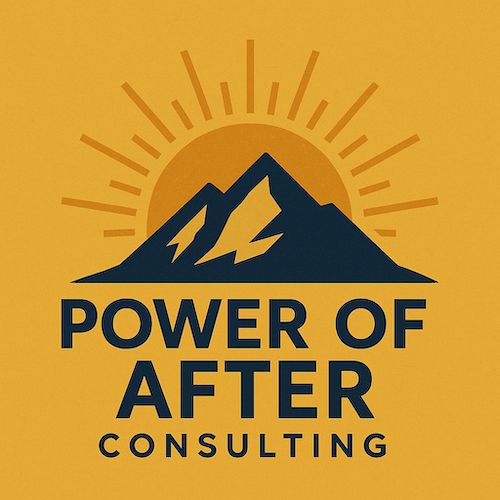You may be asking why structure matters at mid-career. During earlier stages of life, structure often comes pre-packaged. Work hours, school calendars, children’s activities, or corporate demands provide a framework for how time is spent. Our family with our three growing sons, lived for part of the year at the ball field. Dinners were either homemade pizza, Hamburger Helper or hot dogs from the snack shack. If you have children, or even grandchildren, you understand this schedule! Much of our life revolved around sports, then other school activities as our kids got older, all while we kept our own work going.
At midlife, however, the landscape shifts. Children grow, careers plateau or change, and the demands that once dictated routines may fade. Without intentional structure, days can become filled with distractions or drift by aimlessly. Pretty soon it’s easy to look back on a week and wonder what you really did. Creating your own structure puts you back in the driver’s seat of your life and schedule. And it doesn’t have to be busy, just intentional.











Well-Crafted Structure
Principle One: Define What Matters Most
These are questions to ask ourselves:
- One: What would I regret not doing in the next ten years? I recently had a friend debating whether to go on an overseas trip with her husband, who will be playing golf for a few of the days. I frankly told her I thought she’d regret not going. These opportunities can end sooner than we imagine so don’t miss those experiences.
- Two: What are your “must-haves” for this chapter of life? Here are some ideas: health, creativity, income, service, relationships? Our health is extremely important and paying attention to diet, exercise and sleep should be one of our priorities, especially because it can affect everything else.
- Three: How do you envision your lifestyle? What do you want your days to look like? If you plan to retire, what will you do after the first three days? The clarity you provide with these questions becomes the foundation of your new structure.
Principle Two: Create Anchors for Your Days and Weeks
Anchors are consistent habits or commitments that give stability to your days. I usually envision a ship when thinking of an anchor. A solid anchor and safe place to drop that anchor can save a vessel from destruction, especially in challenging weather around rocks or other obstacles. The anchors in our lives don’t need to be complicated or heavy, but they should reflect a solidness of our priorities and values.
Examples of anchors include:
- Morning routines with reflection, exercise, or reading. I usually read some scripture every morning and write a few sentences in my journal before exercising. It keeps me focused.
- Regular time blocks for creative work or business projects. Find what works for you. Mornings seem to be my best creative time to work on projects.
- Weekly commitments such as volunteering, social engagements or family dinners.
- Boundaries for technology and screen time. Many devices will now give you an update weekly on your screen time, which may hold a few surprises!
Anchors transform drifting days into purposeful rhythms. For me, it’s like establishing a consistent rhythm in a musical composition. The regular beat following a time signature keeps the piece going. Anchors also protect your priorities from being constantly sidelined by urgent but unimportant tasks.
Principle Three: Align Goals with Systems
Big goals are inspiring, but they’re only achieved when supported by systems. I encourage consistent small steps to achieve those goals. A system is a repeatable process that removes decision fatigue and builds consistency.
Here are some examples:
- If your goal is to write, your system might be writing 500 words every morning at 8 a.m. What you write doesn’t have to be perfect. Just writing and getting words on the page is a step in the right direction and gets the creative juices going.
- If your goal is better health, your system might be planning meals on Sundays and scheduling workouts three days a week. I feel better physically with a consistent workout schedule, even if I’m tired.
- If your goal is financial stability, your system might include automating savings or reviewing accounts on the first of every month. Find what works for you. Systems provide momentum and make progress inevitable.
Mid-Career Reinvention: For those at the halftime of life, the entrepreneurial mindset enables reinvention—leveraging existing skills and resources to create meaningful new chapters. This takes creativity and taking the time to evaluate skills and competencies.
Global Challenges: Issues like healthcare and education require entrepreneurial approaches—innovative, resourceful, and cross-disciplinary. The trades will continue to hold huge opportunity for those who are willing to learn a skill, no matter what age and level.
Technology’s Acceleration: As Schumpeter suggested, “creative destruction” is constant. Only those who adopt entrepreneurial thinking can stay ahead of disruption.
Principle Four: Embrace Flexibility with Accountability
It’s tempting to either swing toward rigidity or complete freedom at the halftime of life. The healthiest structure balances both. Flexibility allows you to adapt to new opportunities, while accountability ensures consistency.
Some strategies for accountability include:
- Using a planner or digital calendar to track commitments. I still use a paper calendar as well as digital. It’s a way to double-check my planning and I like seeing the big picture on the page.
- Sharing goals with a friend, mentor, or mastermind group. This is a very good strategy when making changes and gives a good sounding board for ideas. I have done this more recently and it helps with accountability.
- Setting regular check-ins to evaluate progress. Don’t discount this for both personal and professional areas of your life.
Flexibility without accountability leads to drifting—just like a boat without an anchor. Accountability without flexibility leads to burnout and overwhelm. Combining both creates sustainable structure.
Principle Five: Reframe Structure as Freedom
This is a healthy mindset. Some resist structure because it feels restrictive. In reality, structure creates freedom. By organizing time intentionally, you free yourself from constant decision-making, wasted hours, and regret over missed opportunities. You also create space for spontaneity, creativity, and joy—because the essentials are already accounted for. If you are a creative, this is extremely important to complete projects.
Structure is less about rules and more about creating an environment where your best self and creative self can thrive.
Common Pitfalls to Avoid
- Overloading Your Schedule: Structure should simplify, not overwhelm. I have often had some lofty goals thinking I would get so much more done, but what I really needed to do was create smaller steps for a consistent outcome. Focus on quality, not quantity of activities in a day.
- Neglecting Health: Without physical and mental wellness, no structure can sustain progress. Prioritize rest, nutrition, and movement. This becomes more and more important as we gracefully grow older!
- Ignoring Transitions: Changes in our life, such as retirement, career change, or empty nest require adjusting your structure, especially mentally. What worked and felt right five years ago, or even a year ago, may not be ideal for today.
Takeaways for Creating Your Own Structure
1. Get clear on what truly matters in this chapter of your life.
2. Build daily and weekly anchors that reflect your priorities.
3. Design systems that support your goals and reduce decision fatigue.
4. Balance flexibility with accountability to sustain momentum.
5. View structure not as limitation but as a tool for freedom and fulfillment.
Mid-career and the halftime of life provide a unique opportunity: the chance to build a lifestyle that aligns with your values, skills, and dreams. But without structure, the opportunity can slip away into distraction or stagnation. I don’t want anyone reading this to look back with regret on what could have been, especially at the halftime of life. Take the time to intentionally create your own structure. By doing so, you design a framework for growth, contribution, and joy. This is how you create your ideal lifestyle—not someday, but today.
Additional Resources
Women at Halftime: Principles for Producing Your Successful Second Half by Deborah Johnson
Power of After: What’s Next Can Be Your Most Purposeful Chapter by Deborah Johnson
FREE Downloads: Goal Setting Worksheets
FREE Resources and links: https://GoalsForYourLife.com/DJWorks
YouTube Podcast Playlist: Women at Halftime/Power of After
Creating your own structure puts you back in the driver’s seat of your life and schedule. And it doesn’t have to be busy, just intentional.
deborah johnson
Thought Leader, Keynote Speaker, Author
If you are interested in growing and learning, check out our online courses here: Online Learning
1,529 words

